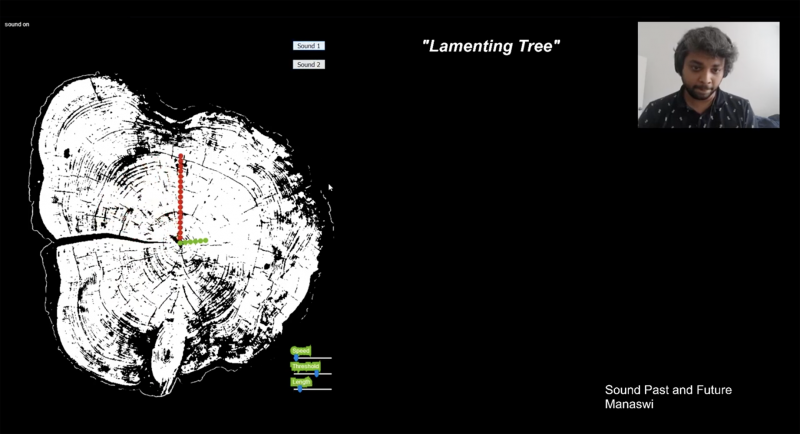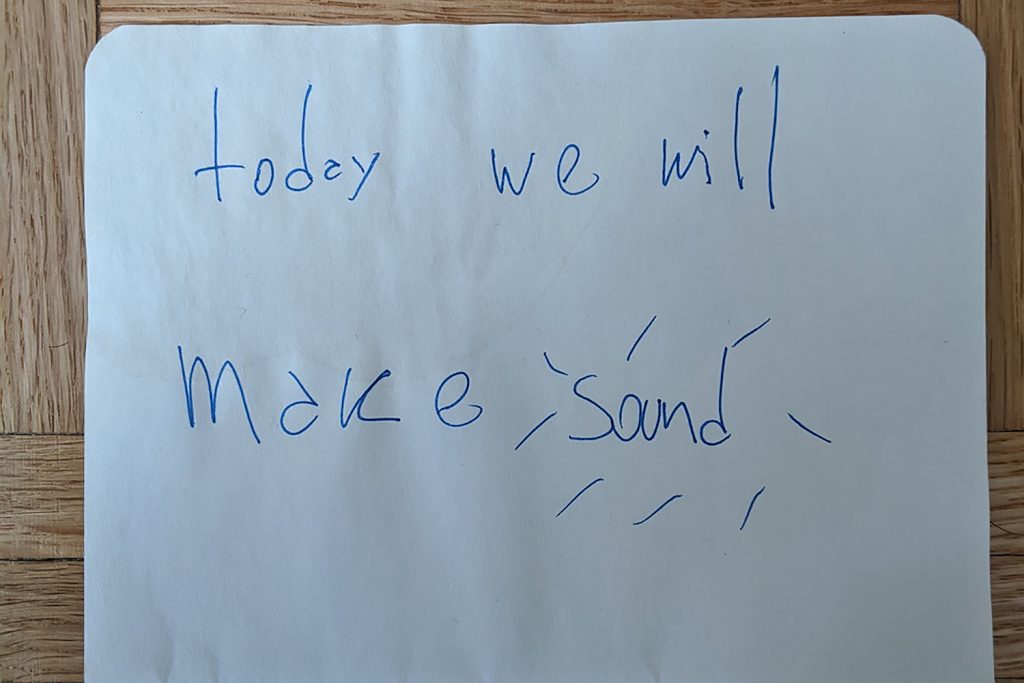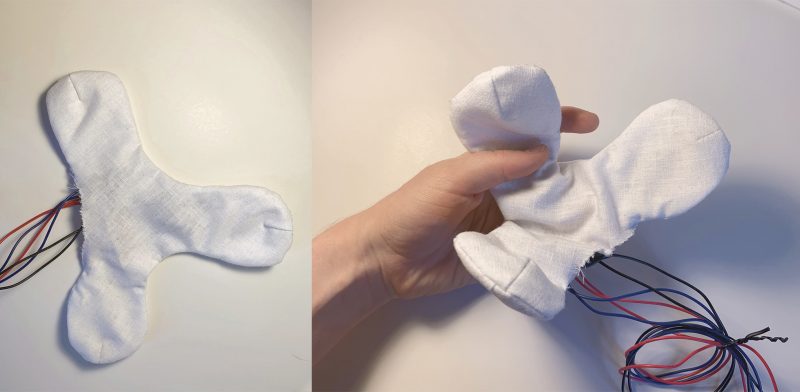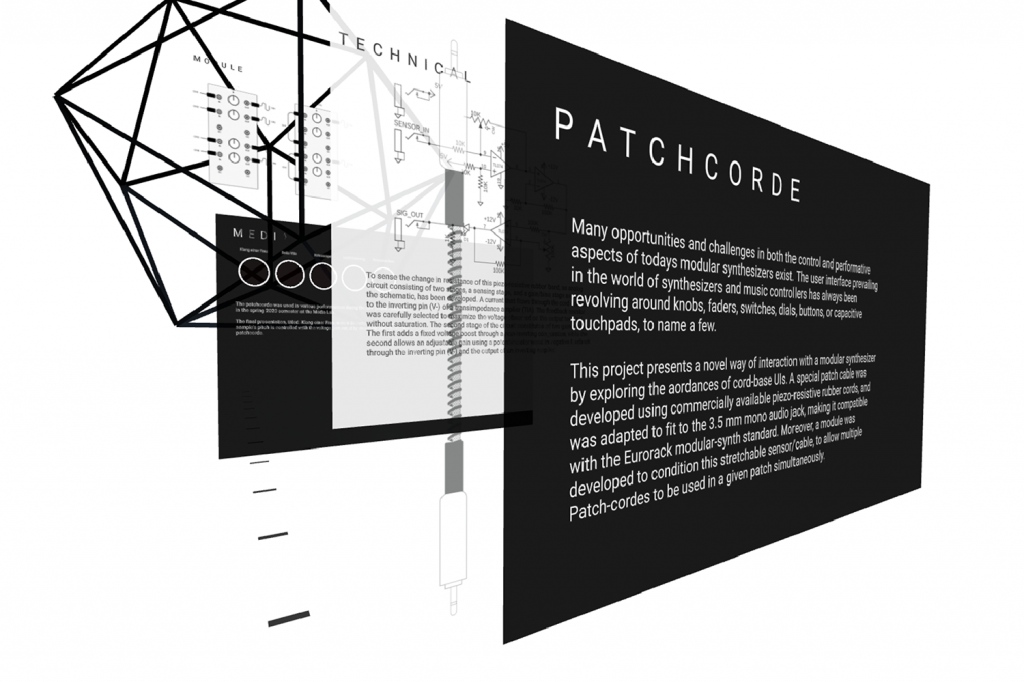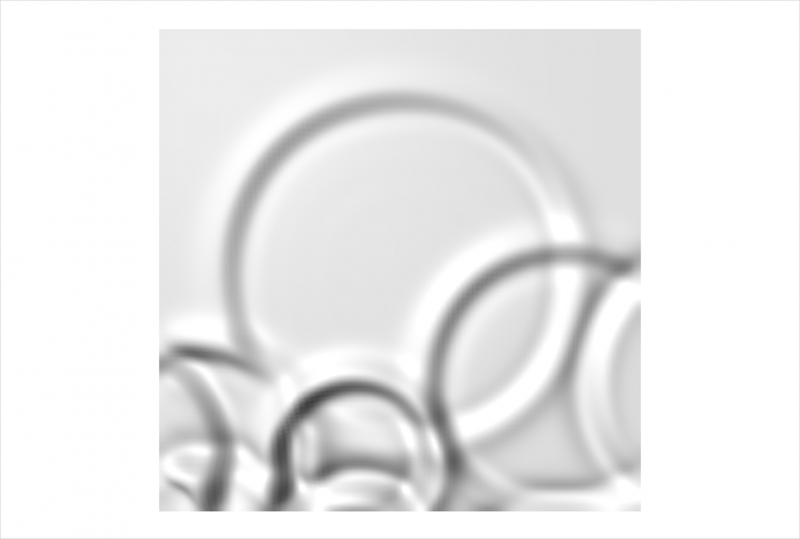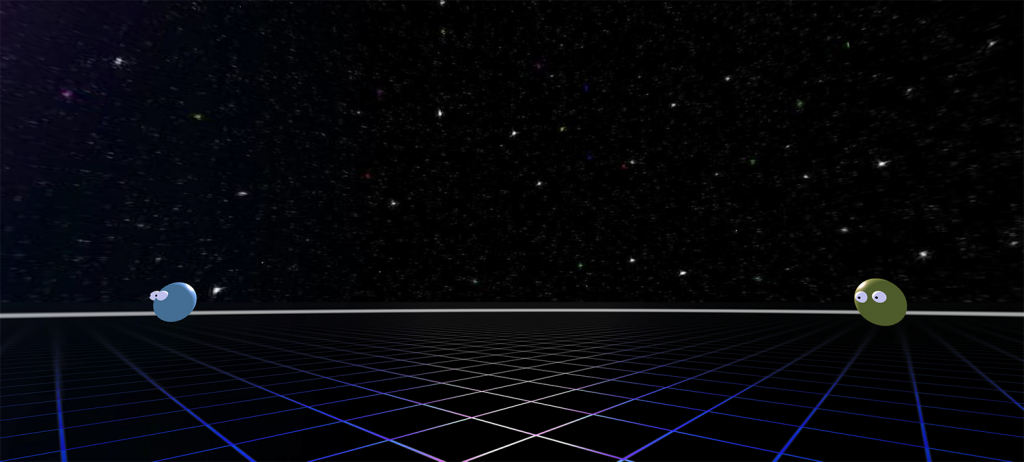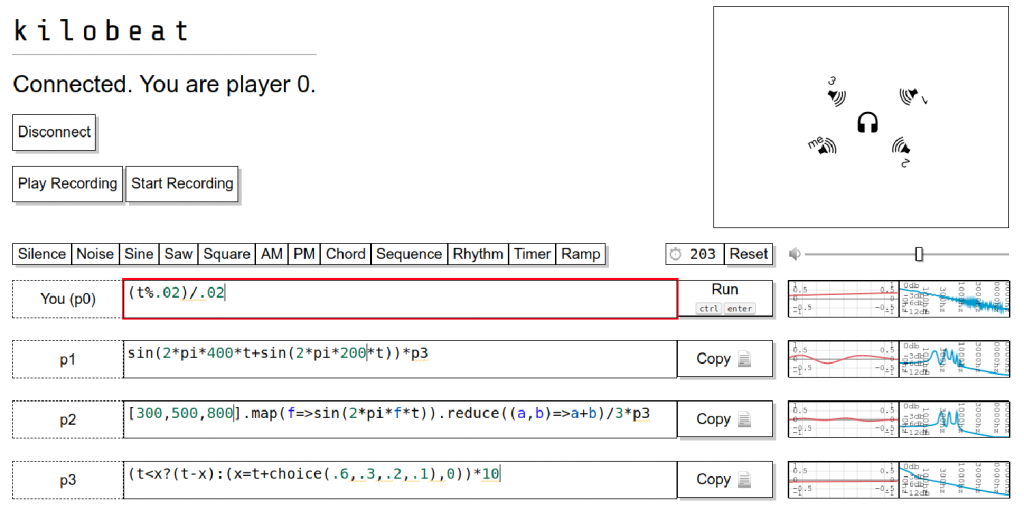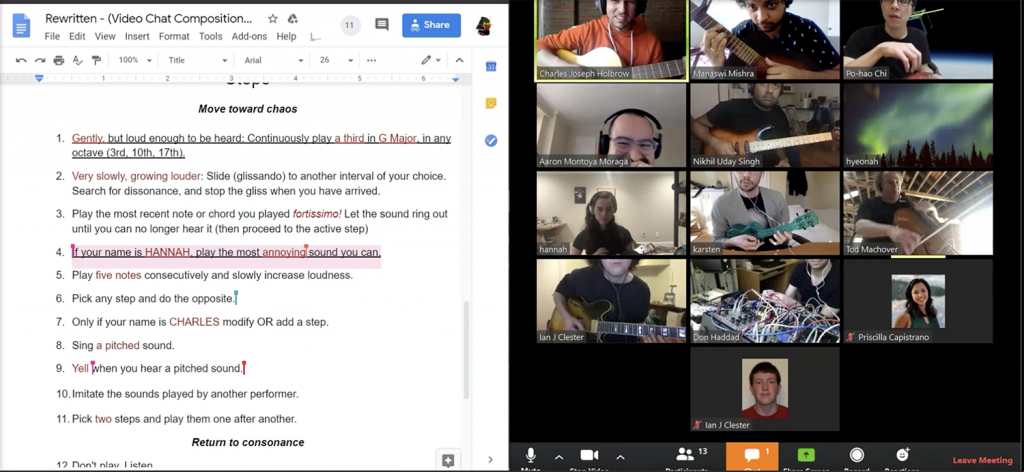Class Projects from Sound: Past and Future
Spring term 2020, MIT Media Lab
Professor Tod Machover
When I planned the spring semester 2020 course Sound: Past and Future at the MIT Media Lab (MAS.826[J]), I imagined two symmetrical parts. The first weeks were to be devoted to absorbing and analyzing some of the most experimental electronic music of the post-WWII period, gradually leading to a series of large-scale creative projects that would be presented as an installation/performance extravaganza outside of MIT, in the “music barn” of our farm/home 25 minutes west of campus. And we did intensively study the music and ideas of Boulez, Stockhausen, Cage and Xenakis – with class projects to allow students to reflect on, and extrapolate from, their works – and then moved on to more recent musical pioneers such as Marianne Amacher, Christine Sun Kim and Anna Thorvaldsdottir. For the latter, we were able to attend a rehearsal and performance of a recent Thorvaldsdottir piece at the Boston Symphony Orchestra, and had planned many similar outings – including a weekend trip to New York, a common feature of my spring term class – later in the semester.
But when the COVID-19 pandemic hit, we realized that the course plan would have to change. Not only would we have to abandon the idea of a live performance weekend in May, but we would need to change the structure and also the content of the class. Since we would be meeting remotely from late March through mid-May, I worked with the excellent class TA’s – Karsten Schuhl, Hannah Lienhard and Manaswi Mishra – to find interesting ways to structure weekly class presentations, discussions and “experiences” via Zoom. And I directed the class to explore and analyze possibilities for using the Internet as a creative and collaborative music-making platform. Class member Charles Holbrow documented some of the fundamental modes – and current limitations – of online music-making, and Charles, Nikhil Singh and I presented some findings in a Media Lab Research Discussion. In fact, I suggested to the class that they consider designing a large-scale, collaborative, audience-participatory online event as a joint end-of-term project, and we did spend time evaluating and participating in precedents for such an experience, and working on what such a class project might be.
In the end, three surprising things emerged from this class. First, it became clear during April that the students were more passionate about developing individual projects than in collaborating on one big project; I didn’t quite expect this, since this path tended to reinforce rather than counteract the isolation that everyone was experiencing. Second, while the projects were all – by necessity – delivered via the Internet, none of them were necessarily bound to that medium, i.e, they were all “fluent” in/on the web, but were not really “about” the web. Third, while the radical post-WWII work of Boulez, Stockhausen, Cage and Xenakis at first seemed to be very very remote after the pandemic hit, it turned out that this work – studied early in the semester – had pretty deeply influenced everyone in the class. Indeed, all the class projects can trace influence back to post-WWII experimentalism, exploring complex timbral worlds, novel approaches to pre- and post-compositional visualizations of pretty-wild music, and asynchronous and flexible forms and structures used to bend time, to stimulate careful listening, and to invite serendipity. Incredible!
For me, the mark of a successful project or a great class is the emergence of wonderful things that were not predicted at the outset. That certainly turned out to be the case with Sound: Past and Future. You can hear and read about it in the excellent documentation provided below by each member of the class. From rich compositions derived from freehand sketches or analysis of found images, from shaking-cellphone interfaces to DIY squishy music toys, and from expressive patch cords to new coding languages for synthesis or structure (to characterize only some of the projects), you will find an abundant array of imagination, fantasy and beauty in these student projects. The fact that all this work – and the many probing, stimulating and ear-opening class discussions – took place in the midst of a global pandemic, a shut-down MIT, and dispersion across the globe is testament to the devotion, concentration and creativity of every student in the group. I hope that you will enjoy spending time with them and their work as much as I have over these past few months.
Tod Machover
Waltham, MA
June 2, 2020
Class projects by students
Radical Composition Study by Manaswi Mishra
Introduction to Computer Neworks for Artists by Aarón Montoya-Moraga
One-Way Transmission by Chi Po-Hao
Squishy Things by Hannah Lienhard
PATCHCORDE by Don Derek
Superpose Simulation by Karsten Schuhl
Virtual Band by Hyeonah Choi
Kilobeat by Ian J. Clester
voicecoil / wavemorph by Nikhil Singh
Rewritten by Charles Holbrow
Radical Composition Study by Manaswi Mishra
Introduction to Computer Neworks for Artists by Aarón Montoya-Moraga
One-Way Transmission by Chi Po-Hao
Squishy Things by Hannah Lienhard
PATCHCORDE by Don Derek
Superpose Simulation by Karsten Schuhl
Virtual Band by Hyeonah Choi
Kilobeat by Ian J. Clester
voicecoil / wavemorph by Nikhil Singh
Rewritten by Charles Holbrow
